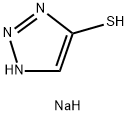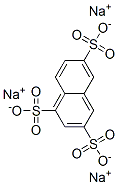Sodium phosphate tribasic dodecahydrate
Synonym(s):TSP;Trisodium phosphate dodecahydrate;tri-Sodium phosphate dodecahydrate;tri-Sodium Phosphate, Dodecahydrate, Sodium Phosphate;Sodium phosphate tribasic, Trisodium phosphate
- CAS NO.:10101-89-0
- Empirical Formula: H6NaO5P
- Molecular Weight: 140.01
- MDL number: MFCD00149198
- EINECS: 600-151-8
- SAFETY DATA SHEET (SDS)
- Update Date: 2025-03-07 09:41:50

What is Sodium phosphate tribasic dodecahydrate?
Description
Sodium phosphate tribasic dodecahydrate is also known as trisodium phospate or TSP. It is a highly soluble in water and widely used as a cleaning agent. The pH of a 1% solution is typically around 12, making this reagent sufficiently alkaline for saponification of grease and oils. In combination with surfactants, TSP is an excellent agent for cleaning everything from laundry to concrete driveways. This versatility and low manufacturing price made TSP the basis for a plethora of cleaning products sold in the mid-20th century. Trisodium phosphate is used in the isolation of mycobacteria, including culturing of tubercle bacilli. Has been used as a protein precipitant in certain applications and in co-precipitation and fractionization of nucleotides. May be used for the preservation of biologically active soil samples. Because of the alkaline pH, TSP disrupts cytoplasmic and outer membranes of Salmonella enterica cells making it useful in preventing the spread of bacteria. It is used in photographic developing, clarifying sugar, removing boiler scale, softening water and manufacturing of paper. They are added to many foods as an emulsifier to prevent oil separation. It can be utilized as a leavening agent. Some instances of these foods include the batter coating on breaded fish or chicken, and commercially baked cakes. Adding this item to food increases the shelf life of the food, maintaining the texture and visual aspect of the food.
Chemical properties
colorless or white crystal(s); used to soften water, as a detergent and metal cleaner [MER06] [HAW93] [STR93]
The Uses of Sodium phosphate tribasic dodecahydrate
Sodium phosphate tribasic dodecahydrate is often used in the formulation of various buffers.
What are the applications of Application
Sodium phosphate tribasic dodecahydrate is often used in the formulation of various buffers
General Description
Sodium phosphate tribasic dodecahydrate is a hydrated trisodium salt of phosphoric acid. It is widely used in various water treatment methods.
Hazard
Low toxicity by ingestion.
Biochem/physiol Actions
Sodium phosphate tribasic also referred to as Trisodium phosphate or TSP is a widely used cleaning agent. Trisodium phosphate disrupts cytoplasmic as well as outer membranes of Salmonella enterica cells and hence prevents the spread of bacteria. Further, it is corrosion inhibitor for iron and inhibits the rate of the anodic iron dissolution reaction in unbuffered solutions.
Purification Methods
It crystallises from warm dilute aqueous NaOH (1mL/g) on cooling to 0o.
Properties of Sodium phosphate tribasic dodecahydrate
| Melting point: | 75 °C |
| Density | 1.62 g/mL at 25 °C |
| storage temp. | Store at +5°C to +30°C. |
| solubility | H2O: 0.5 M at 20 °C, clear, colorless |
| form | Solid |
| appearance | White powder (anhydrous) |
| Specific Gravity | 1.62 |
| color | White |
| PH Range | 13 at 190 g/l at 25 °C |
| PH | 12 (10g/l, H2O, 20℃) |
| Water Solubility | 258 g/L (20 ºC) |
| Merck | 14,8662 |
| Stability: | Stable. Incompatible with strong acids. Keep dry. |
| CAS DataBase Reference | 10101-89-0(CAS DataBase Reference) |
| EPA Substance Registry System | Trisodium phosphate dodecahydrate (10101-89-0) |
Safety information for Sodium phosphate tribasic dodecahydrate
| Signal word | Warning |
| Pictogram(s) |
 Exclamation Mark Irritant GHS07 |
| GHS Hazard Statements |
H315:Skin corrosion/irritation H319:Serious eye damage/eye irritation H335:Specific target organ toxicity, single exposure;Respiratory tract irritation |
| Precautionary Statement Codes |
P261:Avoid breathing dust/fume/gas/mist/vapours/spray. P264:Wash hands thoroughly after handling. P264:Wash skin thouroughly after handling. P271:Use only outdoors or in a well-ventilated area. P280:Wear protective gloves/protective clothing/eye protection/face protection. P302+P352:IF ON SKIN: wash with plenty of soap and water. P305+P351+P338:IF IN EYES: Rinse cautiously with water for several minutes. Remove contact lenses, if present and easy to do. Continuerinsing. |
Computed Descriptors for Sodium phosphate tribasic dodecahydrate
| InChIKey | ASTWEMOBIXQPPV-UHFFFAOYSA-K |
Sodium phosphate tribasic dodecahydrate manufacturer
JSK Chemicals
ARRAKIS INDUSTRIES LLP
ASM Organics
New Products
3-Iodophenylacetic acid 3-Pyridineacetonitrile, α-hydroxy- 2-Propanamine, 1-chloro-, hydrochloride (9CI) 3-(hexyloxy)-4-(pyridin-3-yl)-1,2,5-thiadiazole 2-Hexyn-1-ol Dibenzo-18-crown-6 Nickel(II) perchlorate hexahydrate, 98% 4-Bromophenylacetonitrile, 95% 3-Bromo-4-fluoroaniline, 97% Sodium tetraborate decahydrate, 98% Palladium(II) acetate, trimer, Pd 99% 4-Bromo-2-chlorotoluene, 97% N N Dimethylformamide Dimethyl Acetal (Dmf Dma) 2,3-Dichloro Benzoyl Cyanide [Side Chain] Bis(2-Chloroethyl) Amine Hydrochloride L-Glutamic Acid Diethyl Ester Hydrochloride 5-(Difluoromethoxy)-2-Mercaptobenzimidazole 1-Ethyl-3-(3-Dimethylaminopropyl)-Carbodiimide Hydrochloride [EDC Hcl] 1,4-Napthoquinone Bromoiodomethane Sodium Bicarbonate Methylene Dichloride (MDC) Ethyl Acetate Indole-3-Carbinol (I3C)Related products of tetrahydrofuran








You may like
-
 Trisodium phosphate,crystal 98%View Details
Trisodium phosphate,crystal 98%View Details
10101-89-0 -
 Sodium phosphate dodecahydrate CAS 10101-89-0View Details
Sodium phosphate dodecahydrate CAS 10101-89-0View Details
10101-89-0 -
 Sodium phosphate dodecahydrate CAS 10101-89-0View Details
Sodium phosphate dodecahydrate CAS 10101-89-0View Details
10101-89-0 -
 Sodium phosphate, tribasic, GR 99% CAS 10101-89-0View Details
Sodium phosphate, tribasic, GR 99% CAS 10101-89-0View Details
10101-89-0 -
 Sodium phosphate, tribasic CAS 10101-89-0View Details
Sodium phosphate, tribasic CAS 10101-89-0View Details
10101-89-0 -
 Sodium orthophosphate, tribasic, GR 98%+ CAS 10101-89-0View Details
Sodium orthophosphate, tribasic, GR 98%+ CAS 10101-89-0View Details
10101-89-0 -
 tri-Sodium Orthophosphate Dodecahydrate extrapure AR CAS 10101-89-0View Details
tri-Sodium Orthophosphate Dodecahydrate extrapure AR CAS 10101-89-0View Details
10101-89-0 -
 tri-Sodium Orthophosphate Dodecahydrate pure CAS 10101-89-0View Details
tri-Sodium Orthophosphate Dodecahydrate pure CAS 10101-89-0View Details
10101-89-0
